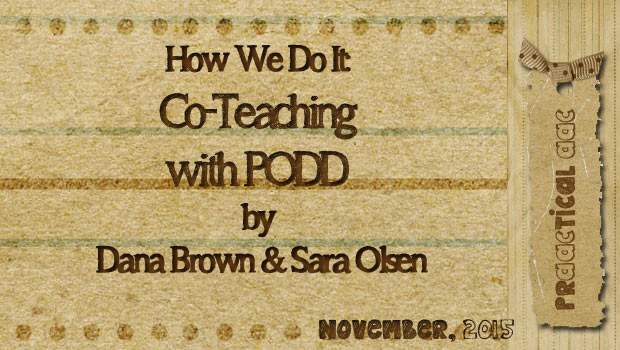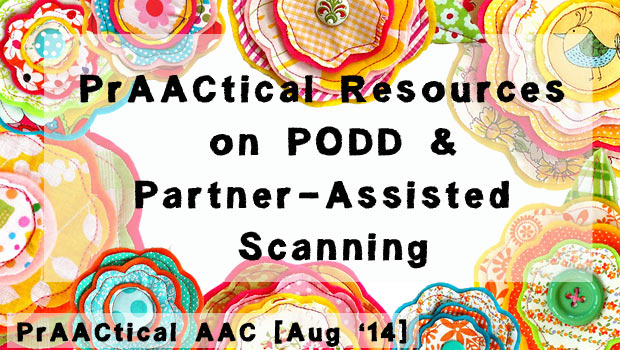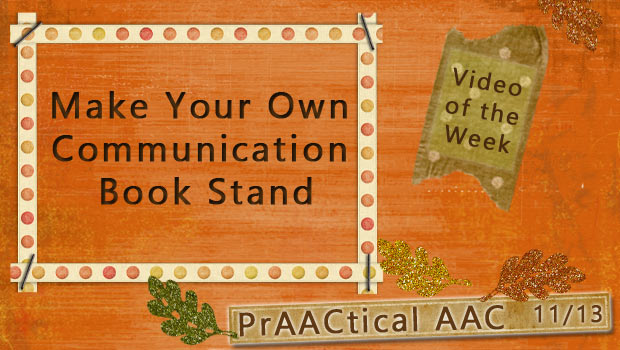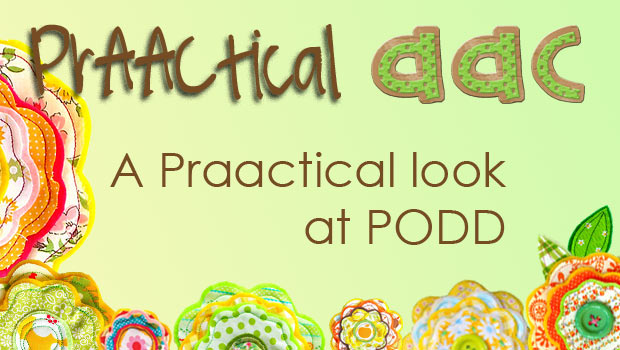How We Do It: Auditory & Visual Scanning with Jack and Mary-Louise

Most of us learn better when we get to see examples of how things are done. In AAC, we don’t have nearly enough examples to learn from so I’m always grateful when someone agrees to show us how they implement particular tools or strategies. Today, we send a big prAACtical “Thank You” to Jack and Mary-Louise in Australia.
When children have significant motor limitations, partner-assisted scanning may be their best option for message selection. In this video, Jack and Mary-Louise show us how they use a combination of visual and auditory scanning. Mary-Louise points to choices in his PODD book and says the message aloud so Jack can consider his options. Jack does his part by signaling when he sees/hears a desired message. Because his body is terribly unoccoperative, he signals in a few different ways (i.e., ‘Yes’ with vocalization, eyebrow raises, head nods, &/or eye gaze, and ‘No’ with a quiet pause or by turning his head away). Take a look at this experienced team work through a message.
Thanks to Jack and Mary-Louise for letting us peek into their conversation and helping us better understand how to use this approach. You can read more about Jack’s story here and see one of his poems below.
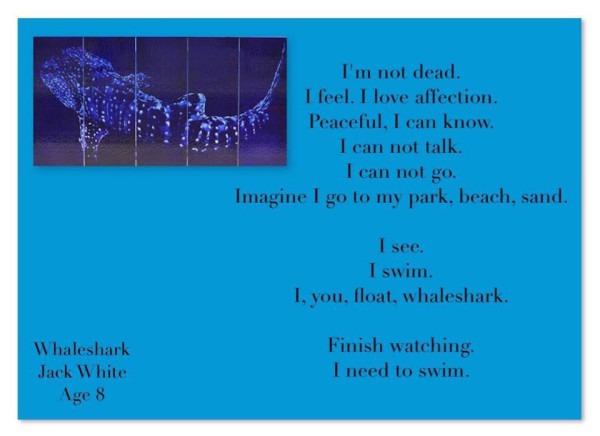
Filed under: PrAACtical Thinking
Tagged With: auditory scanning, Jack White, Mary-Louise Bertram, partner assisted scanning, PODD book, visual scanning
This post was written by Carole Zangari


